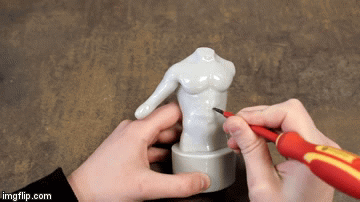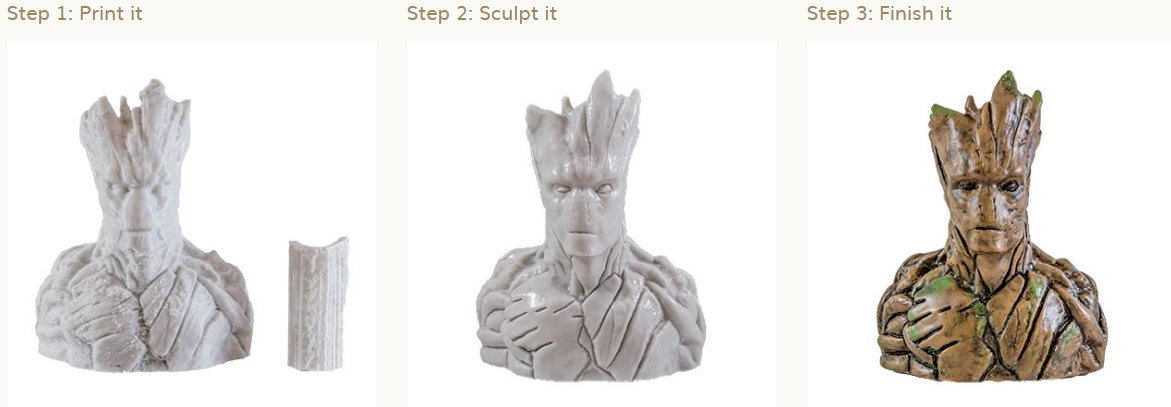Thibra, an innovative materials manufacturer based in the Netherlands, has released a new range of sculptable plastic filaments that can be improved during post-processing for 3D printed parts.
“Thibra3D Skulpt is a complete new innovation in the field of filaments for 3D printing,” said Rutger Ploem, owner of THIBRA. “It took a while of struggling but we got it – the first filament that can be adjusted after the 3D printing process. No more hardship with sandpaper and no more disappointments when your prints come out of the machine.”

A customizable finish
Founded in 2015, Thibra began developing and selling sculptable sheet materials for custom props, prototypes, and art sculptures. After recognizing a gap in the market for an adjustable plastic with a smooth surface, Thirba took the characteristics of its sheet materials and converted it into a sculptable filament.
Made from a combination of special PE’s, binders, and additives, Thibra3D Skulpt are biodegradable filaments that remedy the unsightly print lines and fringes discovered after the 3D printing process.
“We don’t put waxes in our filaments as waxes make the printing process extremely unstable,” Ploem added.
Similar to clay, the 3D printed object is made moldable due to its heat sensitivity. The shape of the object begins to change at temperatures of 70 °C, which can be applied through warm water or a heat gun.

When the object is warm, blemishes and irregularities on the surface of the print can be kneaded or smoothed out. Following this process and depending on the amount of Thibra3D Skulpt layers, the object should be left to cool for a minimum of five minutes.
Once cooled, the objects hardens into a plastic form, which can then be painted or varnished to match the designer’s specifications. The Thibra 3D Skulpt filaments are available in gold, copper, black, and bronze.
In addition, working with Thibra3D Skulpt saves production time and material waste that would have been used on fabricating another object after a disappointing print. Furthermore, the material can be reheated an unlimited amount of times.

Post-processing procedures
A tedious part of achieving an ideal 3D printed object stems from post-processing procedures, which can range from chemical treatments, polishing, and sanding.
To streamline these processes, Carbon, the Silicon Valley-based additive manufacturing company, released the SpeedCell system, a robust, industrial-grade 3D printer and Smart Part Washer that allows optimal cleaning and easy finishing of parts.
Prior to this, Additive Manufacturing Technologies (AMT) received a £624,000 grant from Innovate UK to refine a new automated post-processing method for 3D printed parts.
Keep up with more of the latest 3D printing news by subscribing to the 3D Printing Industry newsletter. Also, follow us on Twitter, and like us on Facebook.
Need a change of pace? Seeking new talent for your business? Search and post 3D Printing Jobs for opportunities and new talent across engineering, marketing, sales and more.
Featured image shows a range of sculptable 3D printed materials. Photo via Thibra.

